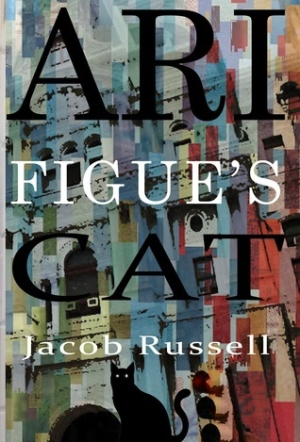
Ari Figue's Cat
An experiment in poetic prose, nonlinear scenes, and even font style, this novel offers a tale of a vibrant city full of mystery.
Ari Figue’s Cat is Jacob Russell’s deep, perplexing novel of finding love in the least likely of places, and its complexity will either enthrall or completely alienate readers. But for those who enjoy experimental literature, this book will entertain.
The story gets rolling in 2002 in Philadelphia, where the title character rides the Frankford El, one of the city’s train lines. Ari has fallen in love at first sight with a woman he calls the Snow Angel, and from there he travels through the city and through time. As a result, Ari’s story also becomes a story of the City of Brotherly Love, which is documented through alternating journal entries and straightforward prose.
This is not a book for those looking for an easy exploration of love. This is experimental literature mixed with poetry, and it’s complicated. The author uses words as art, and there are lovely descriptions of Philadelphia, snow, and people. As the narrative does not move sequentially from point A to point B, there are a lot of stops along the way, with each description and encounter imbued with layers of meaning. Avant-garde, dreamscape imagery, fragments of journal entires—all are hallmarks of the experimental genre, and all are present here. Even the font size changes to reflect different thoughts and emotions, much like the technical innovations seen by experimental authors in the past. The typesetting is visually stunning and pleasing to read.
There is so much going on in Ari Figue’s Cat: examinations of love, life, and death. It may be best to take in this book one chapter at a time and to pause at regular intervals. At its most basic level, the book offers a tale of a vibrant city full of mysteries and stories yet to be unearthed, and it invites readers to dig a little deeper if they choose.
Reviewed by
Barbara Nickles
Disclosure: This article is not an endorsement, but a review. The publisher of this book provided free copies of the book to have their book reviewed by a professional reviewer. No fee was paid by the publisher for this review. Foreword Reviews only recommends books that we love. Foreword Magazine, Inc. is disclosing this in accordance with the Federal Trade Commission’s 16 CFR, Part 255.
